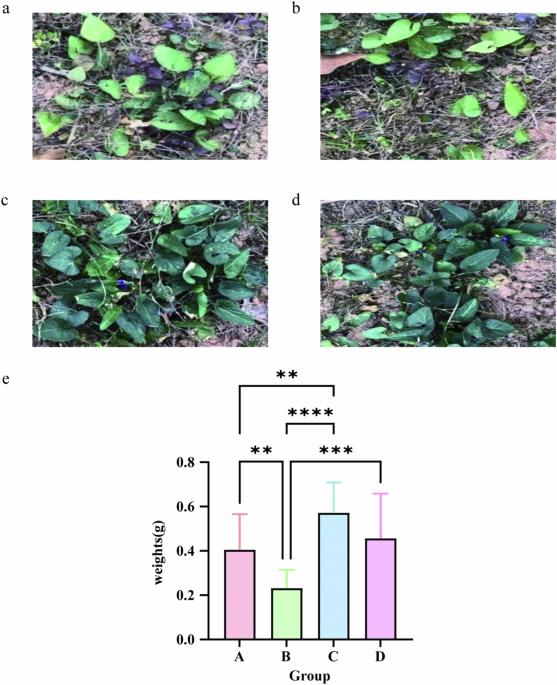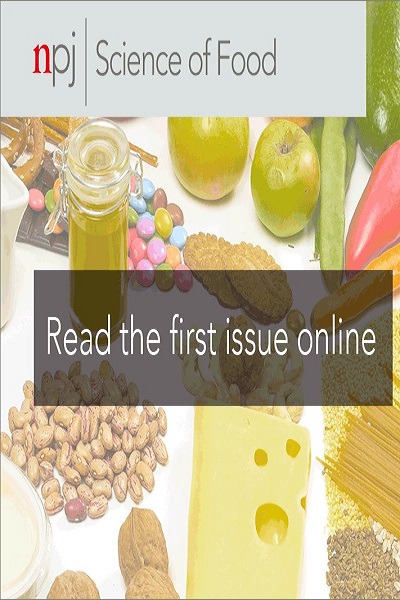用红糖喷洒食用药用植物 Viola inconspicua 的理想叶片喷洒策略。
IF 6.3
1区 农林科学
Q1 FOOD SCIENCE & TECHNOLOGY
引用次数: 0
摘要
比较了典型的食用药用植物 Viola inconspicua 在喷洒水(A)、红糖水(B)、红糖、尿素和 KH2PO4 水(C)或 KH2PO4 和尿素水(D)后的叶绿素、生物量、代谢组和细菌群落。喷洒 C 溶液的植株叶绿相对正常,生物量最高。与 A 组相比,B、C 和 D 组的叶片不同积累代谢物(DAMs)分别为 72、94 和 104,根部不同积累代谢物(DAMs)分别为 105、88 和 92。通常,C 组和 D 组氨基酸的相对丰度升高,而 B 组叶片黄酮类化合物的相对丰度升高。值得注意的是,C 组与 A 组的叶片 DAMs 与 C 组的一种至多种门或/和属优势细菌有很强的相关性。综上所述,叶面喷洒红糖、尿素和 KH2PO4 水是保持不倒翁植株叶绿和生物量的理想方法。本文章由计算机程序翻译,如有差异,请以英文原文为准。

An ideal leaf spraying strategy of brown sugar for edible medicinal plants of Viola inconspicua
The typical edible medicinal plants of Viola inconspicua were compared with leaf-green, biomass, metabolomes, and bacterial communities, after leaf-spraying water (A), brown sugar water (B), brown sugar, urea, and KH2PO4 water (C), or KH2PO4 and urea water (D). The plants sprayed with C solution presented relatively normal leaf-green and the highest biomass. In contrast of A group, B, C, and D groups were found with 72, 94, and 104 leaf differently accumulated metabolites (DAMs) and 105, 88, and 92 root DAMs, respectively. Typically, relative abundances of amino acids were elevated in C and D groups, while those of leaf flavonoids were increased in B group. Noticeably, leaf DAMs of C group versus A group had strong correlations with one to more phylum- or/and genus-dominant bacteria of C group. Taken together, leaf-spraying brown sugar, urea, and KH2PO4 water are ideal for holding leaf-green and biomass in V. inconspicua plants.
求助全文
通过发布文献求助,成功后即可免费获取论文全文。
去求助
来源期刊

NPJ Science of Food
FOOD SCIENCE & TECHNOLOGY-
CiteScore
7.50
自引率
1.60%
发文量
53
期刊介绍:
npj Science of Food is an online-only and open access journal publishes high-quality, high-impact papers related to food safety, security, integrated production, processing and packaging, the changes and interactions of food components, and the influence on health and wellness properties of food. The journal will support fundamental studies that advance the science of food beyond the classic focus on processing, thereby addressing basic inquiries around food from the public and industry. It will also support research that might result in innovation of technologies and products that are public-friendly while promoting the United Nations sustainable development goals.
 求助内容:
求助内容: 应助结果提醒方式:
应助结果提醒方式:


